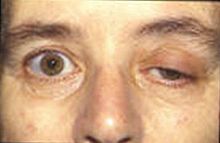 Approved in 2007 by Health Canada, buprenorphine is a partial mu receptor agonist, kappa receptor antagonist. This is felt to have a beneficial profile for treating opioid dependence, considering, as a partial agonist, it will provide some activity at the receptor, but carry a ceiling effect that would limit the development of serious toxicity. For this reason buprenorphine alone or incombination with naloxone has become a commonly used drug in addictions medicine. Its been shown to have similar efficacy in reducing illicit substance use, associated with less mortality than methadone and can be taken as an outpatient on a non-witnessed protocol (unlike methadone). Its prescribed in dozens of countries around the world, where over 95 thousand patients receive this for opioid dependence in France. Despite the safety profile being improved from other opioides, there are multiple case series of overdose deaths related to intravenous and oral ingestions. In Finland, buprenorphine is a leading drug of abuse, likely due to its higher rate of availability compared to North America.
Approved in 2007 by Health Canada, buprenorphine is a partial mu receptor agonist, kappa receptor antagonist. This is felt to have a beneficial profile for treating opioid dependence, considering, as a partial agonist, it will provide some activity at the receptor, but carry a ceiling effect that would limit the development of serious toxicity. For this reason buprenorphine alone or incombination with naloxone has become a commonly used drug in addictions medicine. Its been shown to have similar efficacy in reducing illicit substance use, associated with less mortality than methadone and can be taken as an outpatient on a non-witnessed protocol (unlike methadone). Its prescribed in dozens of countries around the world, where over 95 thousand patients receive this for opioid dependence in France. Despite the safety profile being improved from other opioides, there are multiple case series of overdose deaths related to intravenous and oral ingestions. In Finland, buprenorphine is a leading drug of abuse, likely due to its higher rate of availability compared to North America.Fentanyl binds to mu receptors, having a potency of nearly 100 times that of morphine. It was produced in the 1960's, and in the 90's transitioned to a patch form, mixing drug with a gel alcohol. Its felt to offer a unique profile for pain control, in that it does not have active metabolites, provides a steady stream of drug into the blood, and may be safer in patients with renal insuffuciency. A systematic review in the journal of palliative care found that GI side-effects were reduced with fentanyl compared to oral morphine. There are also health concerns with fentanyl, as there have been many reports of accidental overdose. Many of these cases involve children who may mistake the patch as a band-aid and place it on their skin.
Methadone has been around for a while. Created in Germany during world war II it was used on soldiers to treat pain and boost morale. It likely did one of the two. The German scientists that created methadone lost their patent following the war, which allowed American scientists to manufacture the medication widely, selling the patents to various pharmaceutical companies for the steep price of one dollar. Methadone is still inexpensive when compared to its alternatives (buprenorphine). The half life can vary in individuals, but can spans from 12-160 hours. It provides analgesia through acting on opioid and NMDA receptors. Its long half life is what makes it useful in treating opioid dependence, and its been shown in multiple RCTs to be superior to placebo in preventing illicit substance use and decreasing withdrawal symptoms. This comes with the cost of roughly 5000 overdose cases per year in the US. Other adverse effects include QTc prolongation and drug-drug interactions, as it is metabolized via CYP3A4.
Tramadol is being tested to treat many different conditions, from chronic nociceptive pain, to post-herpetic neuralgia and post-traumatic stress disorder. It acts on the mu opioid receptors and inhibits monoamine reuptake (nor-epinephrine and serotonin). Its mechanism of analgesia is not completely understood, but may offer some effect against neuropathic pain. The effects of tramadol have been said to be similar to codeine, for the treatment of moderate to severe pain. Side-effects are common and similar to other opioids, where one study suggested up to 70% of patients developed some kind of side effects, commonly GI upset. Seizures are also possible when taken in high doses. Because of tramadol's activity on monoamine receptors, its use with SSRI's and other medications resulting in increased levels should warrant careful consideration as not to trigger the serotonin syndrome.
These medications are all potentially dangerous, and some require a special license, or suggested clinical education prior to prescribing. Using these medication in the palliative care setting is also different that using these in patients with chronic pain. A recent Cochrane Review found there to be a lack of evidence for the long term use of opioids to treat chronic low back pain. Something to think about:
Cochrane review summary for opioid use in low back pain




